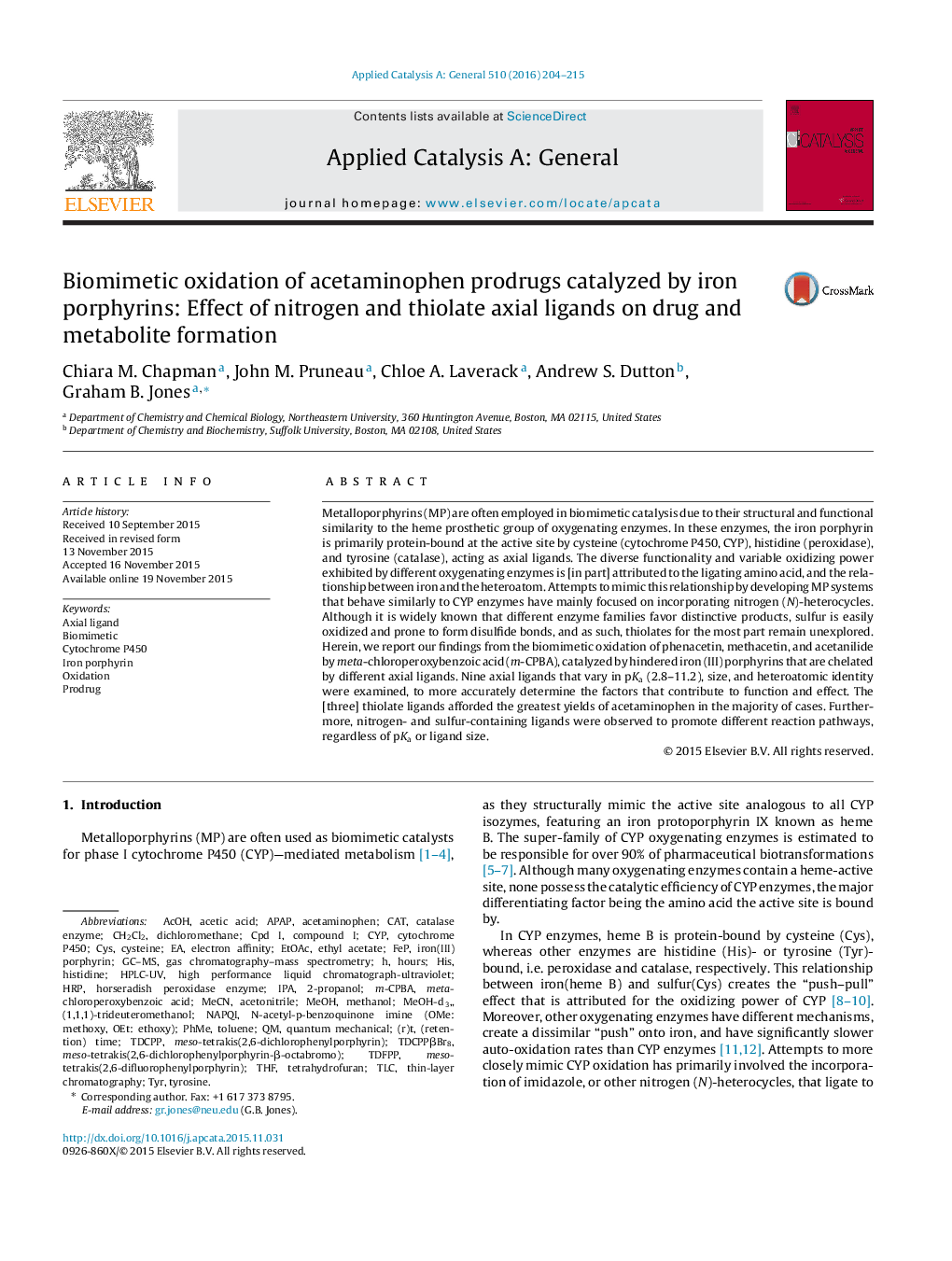| کد مقاله | کد نشریه | سال انتشار | مقاله انگلیسی | نسخه تمام متن |
|---|---|---|---|---|
| 39030 | 45801 | 2016 | 12 صفحه PDF | دانلود رایگان |

• Biomimetic studies on the metabolism of acetaminophen prodrugs were investigated.
• A number of key metabolic intermediates were observed, throwing light on potential alternative pathways.
• Nitrogen- and sulfur-containing axial ligands consistently afford different products.
• 2-Mercaptopyrimidine is employed as an axial ligand and does not suffer from degradation via dimerization or oxidation.
Metalloporphyrins (MP) are often employed in biomimetic catalysis due to their structural and functional similarity to the heme prosthetic group of oxygenating enzymes. In these enzymes, the iron porphyrin is primarily protein-bound at the active site by cysteine (cytochrome P450, CYP), histidine (peroxidase), and tyrosine (catalase), acting as axial ligands. The diverse functionality and variable oxidizing power exhibited by different oxygenating enzymes is [in part] attributed to the ligating amino acid, and the relationship between iron and the heteroatom. Attempts to mimic this relationship by developing MP systems that behave similarly to CYP enzymes have mainly focused on incorporating nitrogen (N)-heterocycles. Although it is widely known that different enzyme families favor distinctive products, sulfur is easily oxidized and prone to form disulfide bonds, and as such, thiolates for the most part remain unexplored. Herein, we report our findings from the biomimetic oxidation of phenacetin, methacetin, and acetanilide by meta-chloroperoxybenzoic acid (m-CPBA), catalyzed by hindered iron (III) porphyrins that are chelated by different axial ligands. Nine axial ligands that vary in pKa (2.8–11.2), size, and heteroatomic identity were examined, to more accurately determine the factors that contribute to function and effect. The [three] thiolate ligands afforded the greatest yields of acetaminophen in the majority of cases. Furthermore, nitrogen- and sulfur-containing ligands were observed to promote different reaction pathways, regardless of pKa or ligand size.
Figure optionsDownload high-quality image (124 K)Download as PowerPoint slide
Journal: Applied Catalysis A: General - Volume 510, 25 January 2016, Pages 204–215